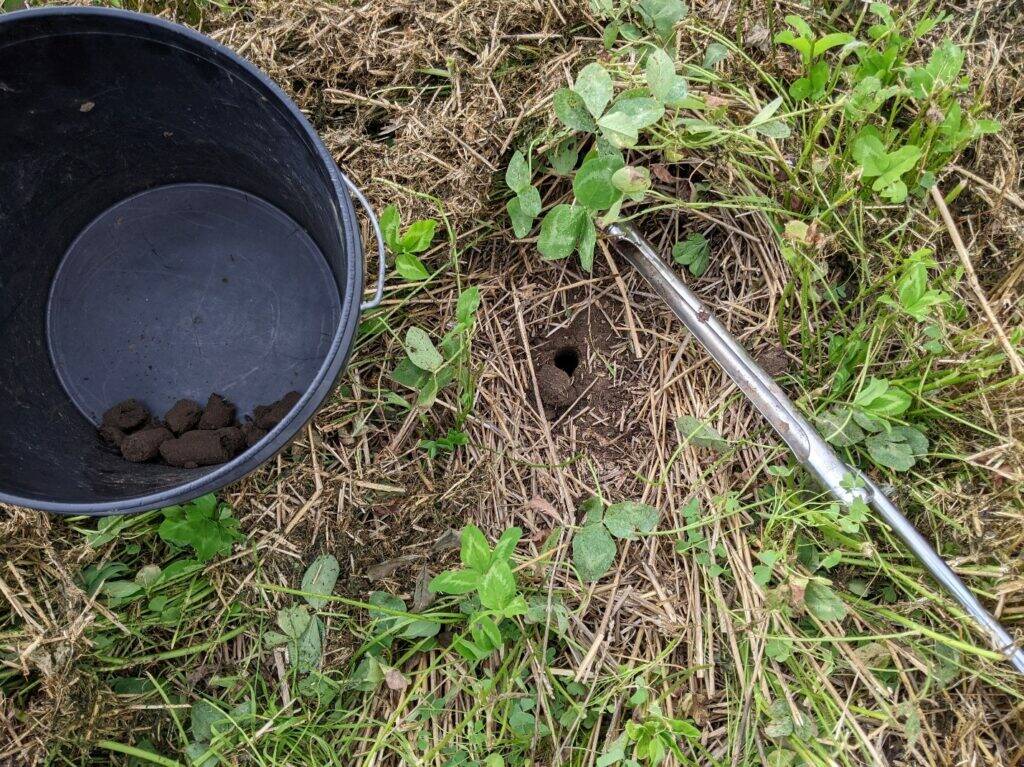Some areas of New Zealand have optimal climatic and geologic conditions for growing big wheat crops. For Eric Watson, a grain and vegetable farmer from the country’s Canterbury region, leveraging those conditions with specific seeding and input strategies has brought record-breaking yields.
Why it matters: While conditions in Ontario differ, adopting some of Watson’s agronomic approaches might help Ontario growers improve their own wheat production game.
With a moderate maritime climate, large topsoil layer with 4.5 to five per cent organic matter, and irrigation access, Watson was able to produce Guinness World Record wheat yields on more than one occasion. Clocking in at 258 bushels per acre, his most recent crop broke his own previous record.
Read Also

Proactive soil sampling brings fertility cost savings
Soil sampling can give growers a clearer picture on the true fertility needs of their fields.
Presenting during the 2021 Ontario Agriculture Conference, Watson — with David Weith, a territory sales manager for Bayer and Watson’s chief agronomist — detailed a management strategy that Ontario growers might think is light on both nutrients and seeds.
Watson strives to plant wheat in a three-year rotation — wheat, ryegrass, a vegetable of some variation, then back to wheat. Using a drill set for 15-centimetre rows, his latest world record was seeded at 126 plants per sq. metre, or about 12 to 13 plants per sq. foot. Each plant produced 10 tillers for a total of 1,260 tillers per sq. metre.
“We’re in a bit of an interesting situation. You’d think you might need more tillers but there’s only so much space. How do you best fill that space?” asked Watson.
By not cramming as many plants as possible into the space, the plants have room to “express themselves,” Watson said.
That includes root development, which aids in lodging prevention.
Preventing lodging
Weith said lodging is also prevented through the use of growth regulators — which keep the crops from getting too tall — and an aggressive disease management program to eliminate pathogens and pests that would otherwise weaken the stalks.
Watson’s fertility program includes potash, some sulphur if required, and 300 kilograms of liquid nitrogen per hectare, doled out in 50-kilogram quantities five or six times each growing season. To reduce the risk of leaf scorch, he combines good spray nozzles with afternoon or evening application.
Weith said the goal is to stress the crop enough to generate beneficial physiological responses.
“There’s no recreational nitrogen,” he said.
What works in Ontario
A temperate, maritime climate might seem like dream conditions for Ontario wheat producers, but some of Watson and Weith’s strategies are likely to improve yields here too.
Joanna Follings, cereals specialist with the Ontario Ministry of Agriculture, Food and Rural Affairs, said that includes variety selection and lower seeding rates.
The first step is getting good establishment with the right seeding rate, right spacing, while planting early and in good conditions, she said.
Doing this gives tillers more time to develop, supporting better yields “right out of the gate.”
“How many of you know what your heads per square foot was like this fall?” asked Follings, also stressing the importance of giving plants enough room to fully develop.
It’s also important to understand the yield potential of each field. For this reason, and to connect more growers for peer-based learning, Follings and other partners in Ontario and Michigan are launching the “Great Lakes Benchmarking Project” in 2021.
“A heavy clay loam in Essex County, the yield potential there is going to be something different than the beautiful soils of Oxford County,” Follings said.














